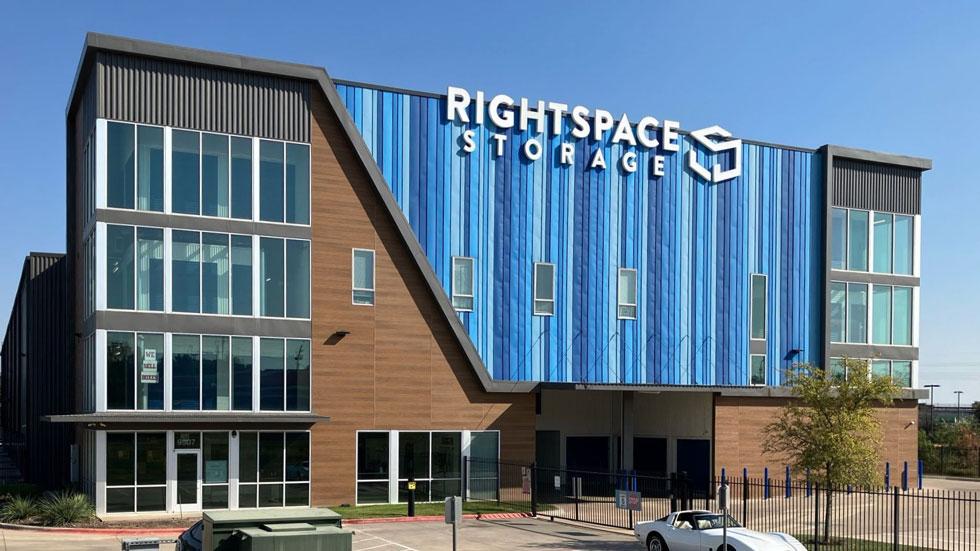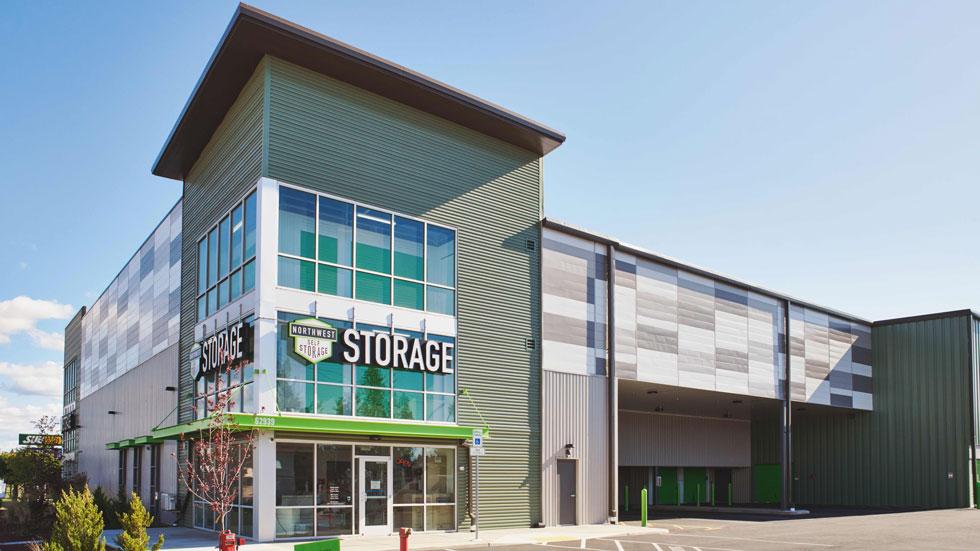
National Storage Affiliates Trust (NYSE: NSA), celebrating its 10th IPO anniversary this year, is positioning itself for the next phase of growth as it moves away from the organizational structure that has driven the company’s success for the past decade.
NSA was formed in 2013 when three private storage operators— Optivest Properties, Northwest Self Storage, and SecurCare Self Storage—joined forces, realizing that though each was a pretty good size regionally, there came a point where there wasn’t enough scale to get to the next level.
David Cramer, president and CEO of NSA, previously served as CEO at SecurCare, and was instrumental in making the partnership come together. “We work in an industry that’s very fragmented and it’s hard to grow scale, so we reached out to Optivest and Northwest to see if we could come together and form a company where we could access public money, and what that would look like,” he says.
So, in the first half of 2013, Optivest Properties, Northwest Self Storage, and SecurCare Self Storage formed NSA utilizing a participating regional operating (PRO) structure in which the affiliated operators would continue to manage and self-brand their contributed portfolios under the NSA umbrella.
By the time the IPO was completed in 2015, NSA had grown to approximately 250 properties and a total enterprise value of more than $1 billion. Over the years, NSA grew to such a scale that in 2024 it internalized the PRO structure and centralized all operations, revenue management, and technologies.
At the start of 2025, NSA’s portfolio consisted of 1,074 self-storage properties with approximately 70.2 million rentable square feet. “Today we have an enterprise value of approximately $9 billion,” Cramer says. “We’ve had a tremendous amount of success with this differentiated PRO structure, which worked really well to help us grow to where we are today, while the internalization of the structure facilitates our next phase of growth.”
A Winning Portfolio
With a diverse portfolio situated in 42 states and Puerto Rico, including several of the top 50 markets, NSA has been looking to densify in markets and has found success in secondary markets as well.

“We thrive in suburban and secondary markets; that’s really been our primary focus,” Cramer says. “We’ve been able to look at markets like Oklahoma City, Tulsa, and Riverside, where we’ve been able to get really good scale, very good operational efficiencies, and we’ve had tremendous success.”
In the last couple of years, NSA has also focused on pruning its portfolio to be more operationally efficient.
“We’ve had a really good growth story since the IPO,” Cramer says. “We had a banner year in 2021 when we bought $2.2 billion of properties in a very vigorous period of growth for us and our peers.”
However, the portfolios that NSA acquired included some assets that didn’t necessarily fit the company’s core growth strategy, whether due to geography, size, or local market dynamics.
“That’s why we’ve actually been disposing of assets, to get our portfolio optimized from a geographic and operational perspective,” Cramer says. “We’ve been reinvesting that money into markets where we want to be and densifying our existing markets. The best part about the self-storage industry is that it’s still highly fragmented so there are lots of opportunities for growth. We like where we’re positioned, and we like the ability to continue to consolidate in a highly fragmented industry.”
Shaping the Company
After completing its IPO in 2015, NSA did several things that helped move the company in the right direction.
“We formed our first JV in 2016; Having JVs broadens our sources of capital and facilitates growing in a way that is capital-light to NSA,” Cramer says. “All of the PROs had long partnerships with private money, so now as a public company we’re able to find some of these larger investors who want to be in the self-storage industry, but don’t have platforms. This has allowed us to continue to grow our operating platforms and build out our technologies.”
Through the 2016 JV, NSA acquired the iStorage portfolio for $630 million. The portfolio consisted of 66 properties and 4.5 million rentable square feet, located across 12 states. Additionally, NSA acquired the iStorage property management platform, including a property management company, a captive insurance company, and the iStorage brand.
Since then, NSA has added three more JV relationships. Some of the JVs could be brought onto the balance sheet when the opportunity is right, Cramer notes.
“In 2020, we started the internalization of the PROs, and started really adding bulk to the corporate team,” he says. “We were able to build strength on the bench and build technology and build platforms, and so starting with the internalization of SecurCare, it really allowed NSA to accelerate its ability to operate on a large scale.”
Evolving Industry
As you look at NSA today, Cramer says, “the things that we’ve done over the last 10 years around positioning the company, positioning the portfolio, and working on technology, the team, and strength of the corporate bench have all made it a winning REIT.”
As examples, he points to the REIT’s digital marketing platforms and digital customer acquisition platforms, its full-service customer care center that can answer phone calls 24/7, and its solid revenue management platform that is “learning every day with the new tools that we’re applying and the new data points that are added.”
All of the knowledge that started with regional operators has enabled NSA to evolve into a “very sophisticated company that has the reach and the ability to have success in all the markets we operate in,” Cramer says.

Meanwhile, a change that happened during the pandemic was the uptick in renting online. Pre-COVID, the company did not fully complete the rental process online, but now it represents approximately 40% of all business. That has meant creating online experiences and a customer journey that can now be completed on a cell phone.
“We have created QR codes so when you arrive at our store, if the property manager is unavailable, you can scan a code, rent a unit, and do everything you want to do right there,” Cramer says. “We’re becoming this full-service company that addressed the customer’s needs where they want to be met.”
Technology allows NSA to have a better reach in terms of how it touches and works with the customer, Cramer says. “I think for us, we’re making sure we’re in a really good position to operate in today’s business environment, which has changed substantially after COVID.”
New Normal
COVID was a time of phenomenal fundamentals for the self-storage industry. Now, it is coming off of the COVID highs.
“All of us saw record occupancies; we saw our portfolio grow 900 basis points in occupancy over the course of five quarters, it just went crazy,” Cramer says. “Since that point, we’ve had to navigate new supply being brought on board, diminishing demand, which is now combined with a soft housing market and the end of low interest rates. Transition around the country has slowed considerably.”
That’s meant navigating some declining overall fundamental performance.
“Now that we’ve all found bottom, I think we are at an inflection point. We’re headed to a place where we need to take everything that we’ve learned over the last decade, but particularly the last two or three quarters, and apply it in today’s business atmosphere,” Cramer says. “The good news is that new supply deliveries are diminishing.”
For NSA, its revenue management tools are stronger and more efficient than they’ve ever been, with Cramer pointing to marketing tools such as the use of machine learning and AI around the call center as game changers.
Additionally, NSA consolidated from 12 brands to seven and put them all under the umbrella of one domain name as the company enhances its visibility footprint for Google and other search engines and social media sites.
“All of these things will help us be a leader in the sector, which separates us from the private operators and individual operators, and certainly we compete very well with our public peers,” Cramer says.
Looking Ahead
As Cramer sees it, the company is in a great spot in terms of how it’s positioned within its peer group.
“I like where we’re positioned; housing turnover has a greater impact on our portfolio than on our peers because of our greater exposure to secondary and suburban markets, which tend to have more single-family houses and homeowners than they do renters,” he says. “When housing does improve, the influence on us should be greater than it is for a lot of others in the sector. Combined with an improving supply situation, I’m bullish about the medium-term outlook for NSA.”
Investors are attracted to the REIT, he believes, because of its long-standing success history.
“We have a diversified portfolio in a very good sector that still has a lot of room for us to have external and internal growth,” Cramer says. At the same time, NSA has a long-term track record of earnings and dividend growth and has increased the dividend 200% since the IPO, he adds.
“Our attractive position in the sector and our philosophy around how we run the properties and our company is conducive to maximizing total returns for shareholders over the long-term,” Cramer says.

